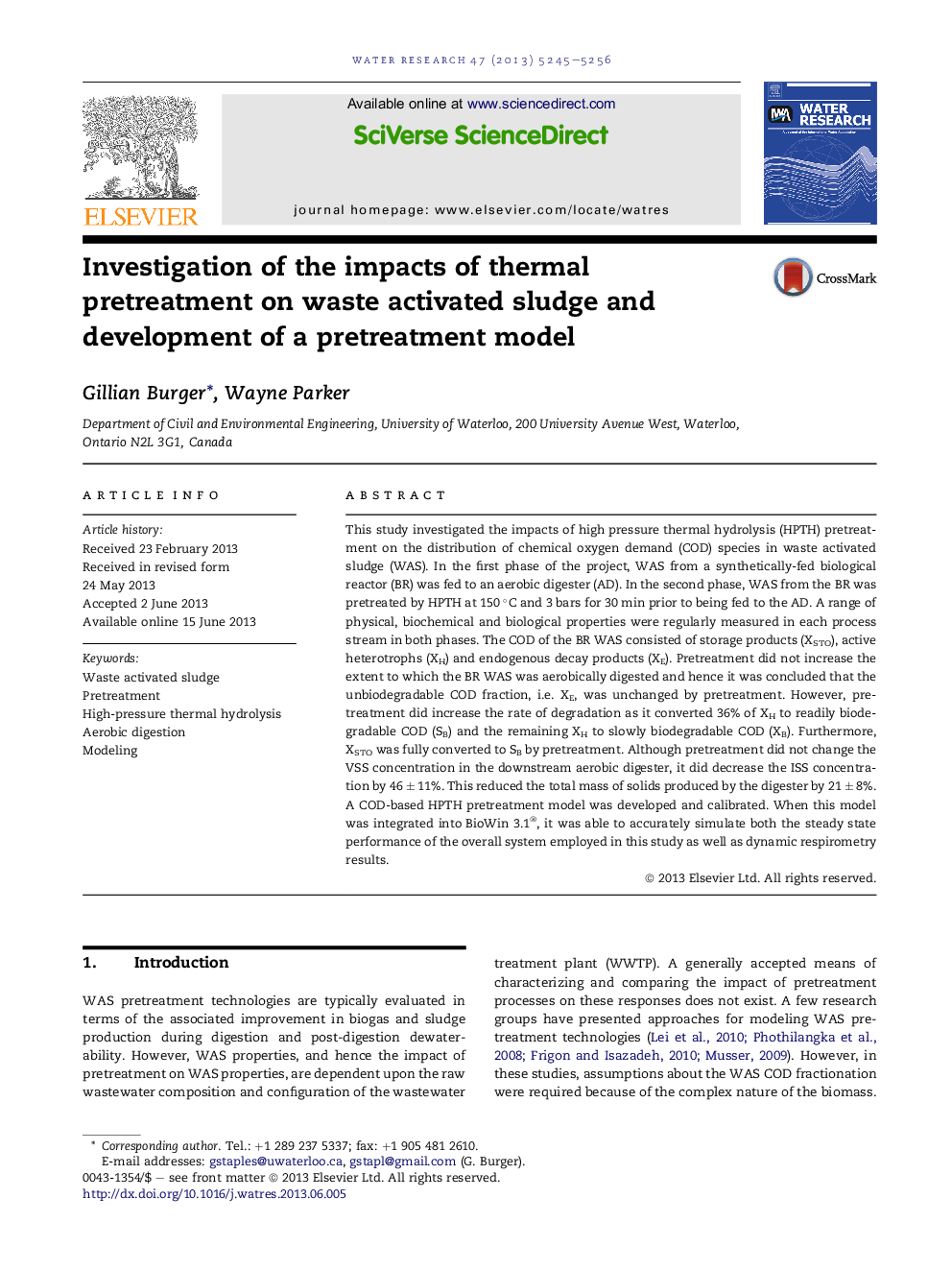| کد مقاله | کد نشریه | سال انتشار | مقاله انگلیسی | نسخه تمام متن |
|---|---|---|---|---|
| 6367628 | 1316843 | 2013 | 12 صفحه PDF | دانلود رایگان |
- The COD of a raw and pretreated waste activated sludge was fractionated.
- Fractionation employed analytical and bioassay methods and modeling.
- Thermal pretreatment increased the rate but not the extent of biodegradation.
- A COD-based pretreatment model was developed and calibrated.
- The proposed approach and model can be used to compare pretreatment technologies.
This study investigated the impacts of high pressure thermal hydrolysis (HPTH) pretreatment on the distribution of chemical oxygen demand (COD) species in waste activated sludge (WAS). In the first phase of the project, WAS from a synthetically-fed biological reactor (BR) was fed to an aerobic digester (AD). In the second phase, WAS from the BR was pretreated by HPTH at 150 °C and 3 bars for 30 min prior to being fed to the AD. A range of physical, biochemical and biological properties were regularly measured in each process stream in both phases. The COD of the BR WAS consisted of storage products (XSTO), active heterotrophs (XH) and endogenous decay products (XE). Pretreatment did not increase the extent to which the BR WAS was aerobically digested and hence it was concluded that the unbiodegradable COD fraction, i.e. XE, was unchanged by pretreatment. However, pretreatment did increase the rate of degradation as it converted 36% of XH to readily biodegradable COD (SB) and the remaining XH to slowly biodegradable COD (XB). Furthermore, XSTO was fully converted to SB by pretreatment. Although pretreatment did not change the VSS concentration in the downstream aerobic digester, it did decrease the ISS concentration by 46 ± 11%. This reduced the total mass of solids produced by the digester by 21 ± 8%. A COD-based HPTH pretreatment model was developed and calibrated. When this model was integrated into BioWin 3.1®, it was able to accurately simulate both the steady state performance of the overall system employed in this study as well as dynamic respirometry results.
189
Journal: Water Research - Volume 47, Issue 14, 15 September 2013, Pages 5245-5256
